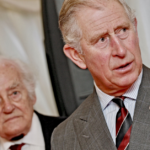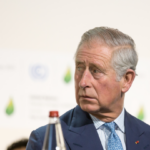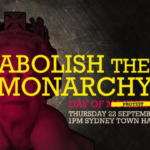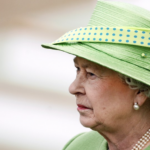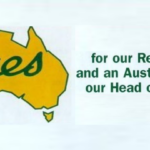Allegiance to the People, Not the King: Australian Republic Movement’s Sandy Biar on Severing Ties
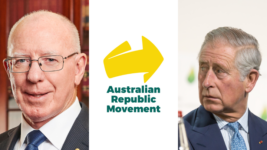
The death of Queen Elizabeth II evoked differing responses. To many in this country, the British monarch of 70 years was a figure who well served the people of the Commonwealth. For others, she was an archaic figurehead, representing past and current ungrounded privilege.
And for many others both here and abroad, she headed up an institution representing their stolen wealth and dispossession.
Elizabeth Windsor was the Queen of Australia, and her son, Charles, is now the King of this country. And our nation, for the most part, has understood that the British monarch, as Australia’s ceremonial head of state, is of little consequence in terms of how this country runs.
However, the responses to her recent passing, the closure of parliaments, a dedicated public holiday and in particular, the push to supress any discussion about our association with a foreign monarch and whether it be maintained, have led to questions about how nominal this association actually is.
“Nothing will save”
Of course, the nation’s on-the-ground head of state is the governor general: the British monarch’s representative in Australia. The current GG is David Hurley, and right before the Queen’s death, his actions also raised concerns about the country’s status as a constitutional monarchy.
As most are aware, Hurley secretly appointed former PM Scott Morrison to be dual administrator of five extra government ministries, and when it came to light, he claimed he was unaware these acts were to remain hidden, despite neglecting to follow protocol and officially diarise the appointments.
And this is hardly the first time the governor general has wielded their power in a controversial manner. On 11 November 1975, then GG Sir John Kerr sacked the prime minister of the day Gough Whitlam, with the stated reason being he couldn’t secure the passage of supply bills.
But others suggest there was foreign interference involved in the dismissal, and the link to the British monarch facilitated this.
Indeed, at the time, current King of Australia Charles III wrote to his mother’s representative down under, congratulating him on being courageous enough to sack our prime minister.
God save the people
The Australian Republic Movement has been campaigning for the nation to sever its ties with the British monarch and become a republic since July 1991. And over the last few years, it’s been engaged in some behind-the-scenes work regarding what seems to be the inevitable shift.
Prime minister Anthony Albanese has pledged to hold a referendum on becoming a republic if elected to a second term in office. And ARM recently released its Australian Choice Model on how our republic should operate based on consultation with a cross range of thousands of Australians.
Sydney Criminal Lawyers spoke to Australian Republic Movement national director and CEO Sandy Biar about the myth that the GG holds no real power, how his organisation’s model dispels the regular concerns raised about becoming a fully independent nation and the path to get there.

The Australian Republic Movement is currently stepping up its campaign to see Australia sever ties with the British monarchy and replace it with a local head of state.
Sandy, in the opinion of ARM, why shouldn’t Australia remain a constitutional monarchy as it currently is?
Hereditary positions have no place in Australian democracy. The idea that a role as important as the Australian head of state could be limited to just one family and not even an Australian family, that should be a concern to all Australians.
We need a head of state who is one of us, an Australian, who’s chosen by Australians, accountable to us and representative of us.
Australia is an independent country and that should be reflected in our constitution, and that means removing the British monarchy from our constitution.
Australians have been raised with the understanding that the British monarch and its representative in Australia, the governor general, play a largely ceremonial role in the politics of our nation, and due to this, their holding of the position of head of state is of little consequence.
But recent events, such as the Morrison-Hurley scandal and the official responses to the Queen’s death suggest otherwise.
Can you talk about this idea that the role of Australian head of state is purely ceremonial?
It’s a common misunderstanding about the role of the governor general and even the role of the monarch. The role of the governor general, in particular, is really understated.
They still maintain the option to veto legislation. They have the option to return it to the parliament with amendments, or even to put that bit of legislation aside and reserve it for the King’s pleasure.
So, it would ultimately be a decision for King Charles to make. We could find ourselves in a situation where some of our legislation, some of our laws, are on King Charles’ desk for him to consider and, as an independent country, that shouldn’t be the case. It should only be in Australian hands.
The governor general also determines whether elections can be held at the request of the prime minister. They determine who the prime minister will be. And ultimately, they’re also meant to be able to unite Australia in times of crisis or adversity.
Now, when the constitution was created, the governor general was given powers to be a check and balance on the prime minister and cabinet.
But, as we saw in relation to former prime ministers and secret portfolios, the governor general has been quite content to wash his hands of the responsibility of upholding our constitutional conventions.
The solicitor general said our representative democracy had been fundamentally undermined by what had occurred. And what we saw was the governor general standing back and saying it wasn’t his responsibility. He stood back and allowed that to happen without saying a word.
We also at times see the governor general being too interventionist, as we saw in the 1975 dismissal.
We now have a King, who as prince after the dismissal congratulated Sir John Kerr for the intervention, calling it the right and courageous thing to do.
We know that Charles has been quite the political activist in the past and that should be a concern for us all: that we have such an activist King, in such a powerful role in our constitution.
Even more recently, questions were raised over the governor general’s role in lobbying the prime minister.
The previous government allocated $18 million to a leadership foundation that had never delivered a leadership program, and it was the governor general that brought that to the prime minister’s attention.
That grant has now been withdrawn by the Albanese government and overturned, quite justifiably and reasonably. That grant wasn’t warranted.
So, the governor general and the British monarch still retain more than just influence. They retain real power over our laws, over our options and the ability to influence others who have power in our system of government.
A lot of this has been possible, in 1975 and more recent circumstances, because there is a lot of ambiguity that surrounds our constitutional conventions, which in many respects are little more than political gentlemen’s agreements.
They are unwritten rules that members of parliament, the governor general and the monarch are expected to play by. But that doesn’t always happen.
So, there’s the opportunity for those conventions, those unwritten rules, to be abused or broken. And there’s little ramifications for when that does happen.
There is also a significant constitutional weakness in the ways these conventions work in relation to the governor general themselves.
They are appointed on the advice of the prime minister, but they can also be sacked by the prime minister at any time.
Likewise, the governor general can appoint the prime minister and can dismiss the prime minister or be dismissed by the prime minister at any time.
So, we’ve got this situation where the prime minister and the governor general are supposed to hold each other in check, but when those two people are at odds with each other, there’s a tension there.
There is the comparison to a western standoff in 1975, when they both had the power to appoint each other and sack each other.
So, if we actually want the governor general or our future head of state to be a general check and balance to the prime minister, then they need to be independent of them.
So, why are the roles of the governor general and the monarch so understated? Why is there this myth that they hold no real power?
It’s convenient for prime ministers to play down the role of the governor general in all of this and play down the role of the monarch.
If the governor general feels like they need to act at the whim of the prime minister to maintain their role, then it helps for there not to be attention drawn to that.
Likewise, the prime minister might want to avoid any embarrassment if the governor general did quietly exercise some power to push back at something the prime minister was doing.
As we’ve seen government papers and other documents released in recent years, we’re getting a better picture of how that actually plays out, when governors general do push back against prime ministers. But all this is happening behind closed doors, it’s happening in secret.
We haven’t got the transparency one would expect around these decisions. And likewise, this scenario has been created due to the fact that they are answerable to each other, rather than independent of each other.
ARM announced its proposed model for a republic, The Australian Choice Model, last January. What does it consist of? And what sort of changes would it make?
The model that we’ve put forward codifies the powers and conventions. So, it removes a lot of that ambiguity that we see in our current system.
It removes the ambiguity that has caused the problems that we saw in 1975. It removes that question mark as to when our head of state can act. And it also ensures that all these decisions are in Australian hands.
Under our proposal, the only institution, which the head of state would be able to intervene in and use their discretion would be the reserve powers, as they’re more commonly known.
Those reserve powers will be limited to appointing as prime minister the person who commands the confidence of the House of Representatives. So, making that clear, that the person with the majority in the House of Representatives must be appointed as prime minister by the head of state.
Removing a prime minister and appointing the prime minister if someone else commands the confidence of the House of Representatives.
And thirdly, if no one can command the confidence of the House of Representatives, then the head of state would have the power to take it to an election, so that impasse could be resolved.
But that would be only after a period of at least seven days, to give the parliament the opportunity to work through that impasse: to give it the opportunity to appoint a prime minister to command the confidence of the House of Representatives.
So, it means that the head of state is then removed from the day-to-day decision-making around laws.
There would be no more royal assent. Giving assent to legislation would be an automatic process that the head of state would only be involved in if they were called upon to give assent to legislation quicker on the advice of the prime minister.
The head of state would have no role in setting up policy. So, they wouldn’t, in any way, have overlapping responsibilities with the prime minister and cabinet or the role of parliament in creating laws.
So, that delineation of responsibilities means that ambiguity is removed.
It is clear who is responsible for what, and for making those important decisions about who leads the country and the laws that are passed, while still maintaining a role for the head of state to uphold our Westminster conventions about who should be our prime minister and for instance, when elections need to be held, they can be.
With our Australian Choice Model, the head of state would be chosen through a nomination process that involved each state and territory parliaments. They would each nominate a candidate or have the option to. Federal parliament would nominate up to three candidates.
So then, we’d have a national ballot from that shortlist: a shortlist of Australia’s most trusted and respected citizens from across the country.
And Australians – all Australians – would get the opportunity to vote for the head of state that they felt represented them best.
So, that really goes to the heart of what Australians have said they want.
We have spent more than two years consulting with more than 10,000 Australians about what changes they want to see. And what they clearly said to us was that they want to be able to have the final say about who our head of state is.
They didn’t want to leave that final decision to members of parliament. They didn’t trust them to make that final decision.
They’re worried that if it was left in the hands of politicians, that politicians would appoint someone who is just simply convenient to them, in a similar way that we see the prime minister choosing the governor general at present.
They don’t want that. Australians have said they don’t want a system that simply mimics what they have got now.
When they find out about how our current system of government works in relation to the prime minister and governor general, the closer they get to that the uglier it gets and the less support there is for our current system and the way that’s set up in relation to the governor general.
So, our Australian Choice Model would leave the final decision in the hands of Australians.
It would ensure that there is a manageable choice, a robust list of candidates, for Australians to choose from, and that’s also important to them.
In a lot of the consultation that we did, we heard back from people who said that they didn’t want a ballot paper with a thousand names on it.
They were also concerned that if it was simply an open process, where anyone could nominate then we might see candidates trying to buy their way onto the ballot or buy their way into the position.
We want to ensure there is a good process ensuring that only the most suitable candidates would be on the ballot paper. And that we have a good representation of Australians from different walks of life, and also from right across the country.
That is what the Australian Choice Model delivers.
It also means that instead of parliamentarians swearing allegiance just to their King, as they have to now, they would have to pledge their allegiance to serve the Australian people and uphold the Australian laws and constitution.
None of those things are included in the current pledge that parliamentarians need to make.
So, for the first time, our head of state and our members of parliament, and our judiciary would be swearing allegiance to Australians and to upholding our laws and constitution.
That may seem like a symbolic thing, but it is nonetheless an important starting point for anyone who takes up high office in Australia: to make it clear who their allegiances are to and that they serve.
The nation already held a referendum on the republic. It took place on 6 November 1999. In the lead up to that national vote, polls had suggested that a majority supported the change, but in the end, the nation voted to preserve ties with the British monarchy.
In your understanding, why was that referendum unsuccessful?
The proposal that was put forward in 1999 wasn’t what Australians wanted. For decades now, they’ve been saying that they want the final say about who our head of state is. So, they didn’t want to support a proposal that left that final decision in the hands of politicians alone.
The second thing was many republicans let the perfect be the enemy of the good. There has to be compromise in the proposal that is put forward.
Not everyone is going to get what they want in terms of their ideal model, but ultimately, that compromise will be far better than what we have now.
So, if we go to another referendum, there needs to be more unity among those who support a republic and an acceptance that even if it’s not their ultimate preferred model that we need to come to an agreement.
If further changes need to be made down the track, then there can be another debate about that. But for now, we need to come to an agreement that all Australians can get behind, and they didn’t do that in 99.
The proposal that came out of the Constitutional Convention didn’t even have the majority support of that convention, so there needs to be a lot more work done to build that consensus.
Another thing was there is very little awareness about our current system of government. And in a vote, there needs to be a greater foundational level of understanding of how our current system of government works.
A lot of the misinformation that opponents of a republic like to promote can be dispelled, so that Australians feel much more informed and comfortable about the decision that they’re being asked to make.
We saw prior to the Queen’s passing that only 36 percent of Australians knew that the Queen was our head of state.
So, it’s hard to have a conversation about who our head of state should be when Australians don’t especially understand how our current system of government works. So, that needs to be overcome.
There were aspects to the campaign in 99 that could have been improved too, which is well and good in hindsight. Thankfully, today, due to new technology, it allows us to reach many more Australians much more easily.
In particular, we can reach out to those Australians that we really need to have that conversation with, those who have a much lower level of awareness than other parts of the population, and technology allows that conversation to happen in a much more accessible way.
It also has its dangers, in terms of misinformation being put out by opponents. But it does provide the campaign with many opportunities, particularly to connect with young people and with people from different walks of life in a way that is much more accessible and meaningful to them.
And lastly, Sandy, ARM has relaunched its campaign following the death of Queen Elizabeth II. What will it comprise of? And should we be waiting until the next term of parliament prior to having a national vote?
Over the last few years, we’ve been building up our grassroots volunteer teams right across the country, which are now starting to get much more active out in their communities, having a presence on the ground and speaking to people.
We will certainly be ramping up our engagement online, in terms of advertising and digital engagement with Australians, ensuring that they’re aware of how our system of government works, but also what the possible alternative is.
We will be working with the federal government and the new assistant minister for the republic Matt Thistlethwaite to raise awareness about our current system of government and, yet again, to raise the merits of an Australian republic.
We’re also heartened by the fact that at the moment, more than 60 percent of federal parliament support a republic as well.
So, we’ll be working with parliamentarians from right across the political spectrum to put this back on the agenda, to help them become more vocal in their support for a republic, and to work with them to bring forward a proposal that all Australians can get behind.
It’s going to take the next couple of years to lay that foundation for a vote. And the federal government has said that a Voice to Parliament is their priority for constitutional reform in this term of parliament.
So, we would envisage a campaign for the republic really ramping up after the Voice referendum. And there is work in the meantime to lay that foundation for any future vote, whether that is late this term of parliament or into the next.


